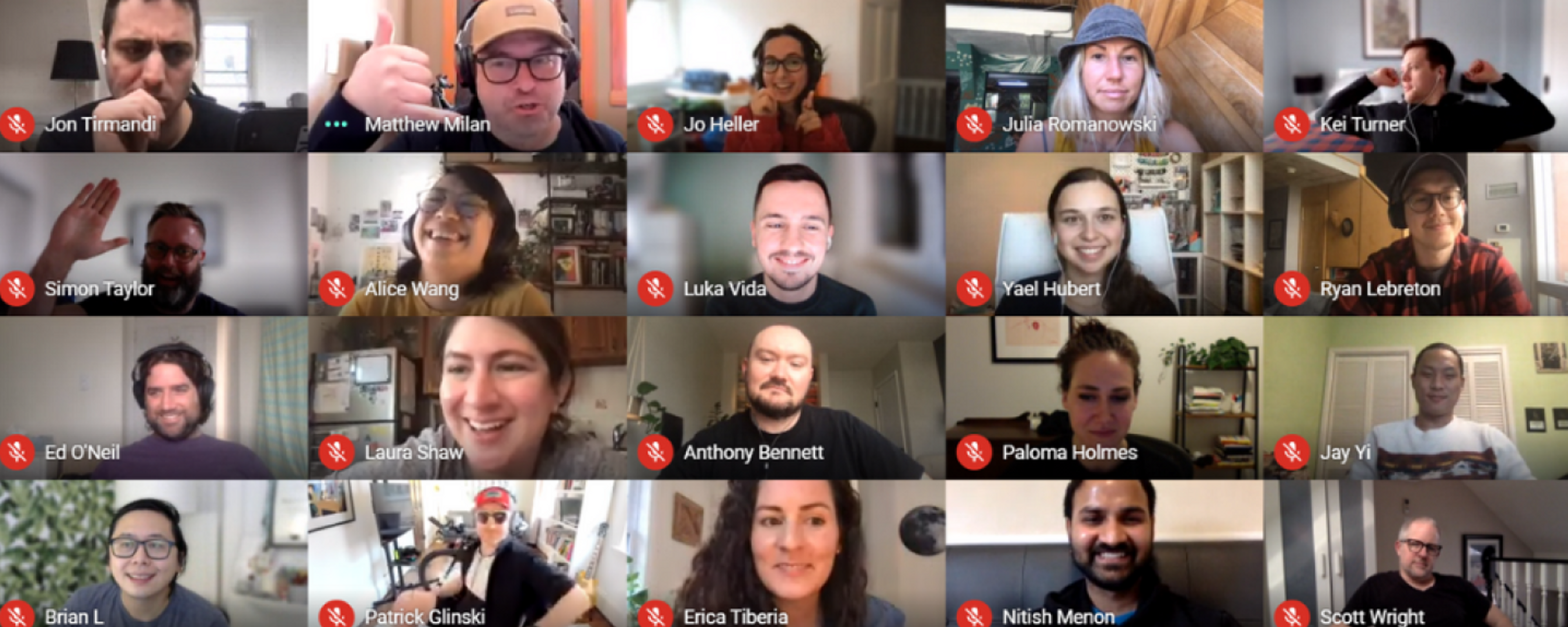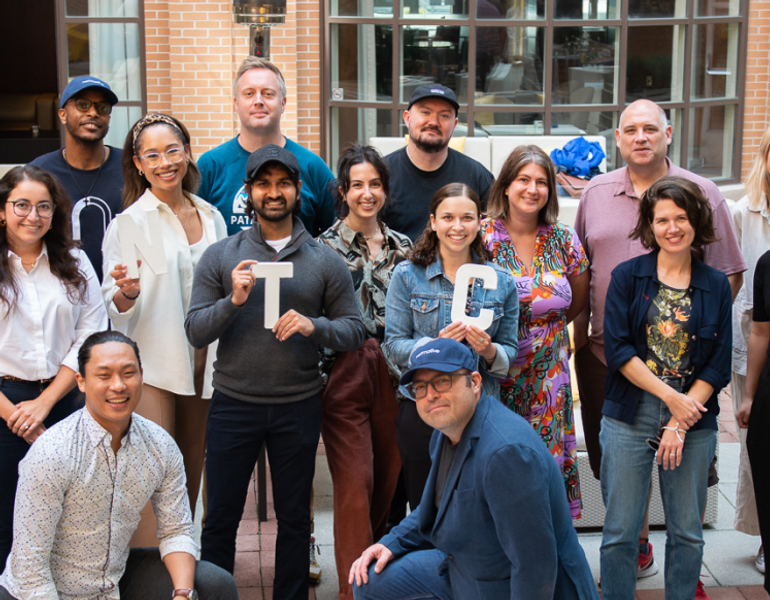Normative’s Guide to a Happy Distributed Work Culture
Previously, I shared how we conducted research with our teammates to uncover their pain points and unmet needs around working in a distributed way. This article will share what we did about it.
Once we solved for people’s technology and home office needs, we needed to uncover “the problem behind the problems” that people shared with us. For each of these critical issues, we generated solutions, and then started to build out and formalize policies and new norms to help our team members empower themselves and feel supported by leadership and Normative.
Here are some of the changes we’ve made that we are proud of:
Async Norms
We heard that people felt pressure to respond to slack messages quickly, no matter what else they were doing. This disrupted flow, distracted people in meetings and working sessions, and generally confused everyone. We realized that the unspoken norms of our office such as “If I’m wearing headphones, don’t bother me!” don’t apply when we can’t see each other.
So we implemented some new Slack norms:
- Ask your questions and make your comments (no matter how small, seemingly insignificant, or perhaps redundant) in the main project Slack channel. This makes for less notifications and takes the pressure off a single person to respond, making it feel more like anyone can respond when they have the time, but that if they don't have the time, someone else will.
- When communicating a need or request, put a deadline on it and urgency rating. That will allow someone to scan your message, and set a reminder for themselves. Don’t assume people are going to reply right away, or that a prolonged wait time holds any meaning.
- When a request or message comes in, or a DM, that doesn’t follow rules 1 and 2, ask the person to do the above. Help others get into these habits.
And some new meeting norms:
- We’ve all seen memes about “this meeting could have been an email”. Consider that before creating a meeting. Is this a working session? Is this an information dump? Think through the outcome of this meeting, then design for it.
- Use good UX when creating meetings. Write a meaningful, descriptive title. Create an agenda. Ensure everyone who has to be there is there (and no one else). Keep it as short as possible in order to get to the desired outcome. No waste.
- Respect each other’s calendars. We all have different schedules. Check in with your teammates’ schedules/lives and then book accordingly (more on this in User Guide to Me)
Purposeful Sync Work
If working async is a delicate dance of respect and care, then sync is a full blown dance party. Sync work should lift you up, bring out the best in everyone, and energize you. Here are some tips for purposeful sync work:
- Sporadic working sessions to get something done. Set a deadline, a timebox, an outcome, and work together. Playing some calm music can help invigorate. Work together in Mural, Figma, Google Docs or Slides, or some other software that lets you jam together efficiently and effectively.
- Pre planned working sessions to connect on a schedule. Negotiate these and set them up, and then use the time together to get done whatever needs getting done. We like to set these up internally and with our clients, so that we get collaborative set times we can connect without the pressure of pre-planning or creating presentations.
- Before either of the above - check in with your colleagues and do a quick temperature check. “I know we planned to work together, do you have the energy right now?” can go a long way.
User Guide to Me
This is the most powerful tool we’ve added to our roster recently, and if this is all you take away from this article, that’s fine with me. The User Guide To Me fits nicely into your kickoff deck for starting a new project, and it gives all team members a chance to reflect on their needs and set boundaries upfront. This tool was created by Cassie Robertson, and you can read more about it here.
Here’s what ours looks like:

Some of the boundaries that I’ve personally set are around preschool drop off / pickup, and no meeting Tuesdays. Having a space to write down my boundaries gives me permission to stick to them; and empowers others to set their own boundaries and maintain them as well. It also gives me a quick peek into my team’s work/life boundaries, which means I can better support and respect their needs.
Establishment of a Social Committee (that's also driven by data)
We heard from people that they were zoom fatigued but missing each other, and “virtual happy hour fridays” weren’t going to cut it. A social committee assembled and put together a robust approach that set up regular recurring events and more flashy one offs.

The team regularly surveyed attendees to learn what was working, what could be improved upon, and what teammates desired for social events. We asked people if they weren’t able to attend a session, why that was, what would make it easier for them to attend, and what they’d like to see in the future. When asked “Would you be disappointed if the Social Committee disbanded?”, 85% replied yes.
Personal Recovery Days
In 2019/20, our resourcing data showed that people were not taking as many sick days as usual, and then suddenly in spring we saw a spike in people calling in sick. We generated several working hypotheses as to why (burnout, fatigue, re-entering the world slowly) and heard the impact that sudden sick days were having on teammates (unplanned absences are always a little tricky to manage).
In response to this uptick in sick days, we proactively created a monthly day where Normative shuts down, and the entire company has a chance to rest at the same time. We call them “Personal Recovery Days”.
An important distinction here: these personal recovery days are not vacation, but set, mandatory time off to recover. Vacations are a negotiated time away from work; Personal Recovery Days are Normative's commitment as a business to support our team’s physical and emotional health through an acknowledgement of the importance of recovery.
Since implementing Personal Recovery Days, teammates have shared in 1:1’s, and in our anonymous Pulse survey that having these set days off together have allowed them to really rest, not worry about what’s happening at work when they’re away, or that they will need to catch up upon their return.
Schedule Autonomy
This one is a bit of a cheat, because we always worked this way; however, we needed to communicate our policies explicitly. Even though we have policies in place that allow people flexibility and autonomy over their schedules, and working late is an exception not the rule, we needed to ensure people saw healthy examples of what this looks like in practice. Policies are meaningless if leads don’t follow suit.
A recent message from our CEO, Matthew Milan, in Slack:

Continuous Feedback
This isn't one-and-done work. This method calls for continued requests for feedback and re-assessment of our approaches to make sure we continue to meet and exceed our team's needs.
How you can start collecting evidence from your team, today
- Survey your team. Treat them as a set of stakeholders in building out their own conditions for work. Here’s a template you can use!
- Remember that people ask for lots of things - not every request is a requirement. Work to understand the problem behind the problem. Also, not every request needs to be acted upon. The evidence you generate will be used to map against business needs. It’s one input into your decision making process.
- Be transparent with what you learn, make decisions, and follow through. Empty promises or half measures cause more stress than not asking to begin with.
- Steal some of our ideas! Really. To learn more about us and how we conduct research with our team (and clients), you can reach out to Laura Shaw, Research Director at Normative.




